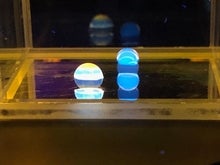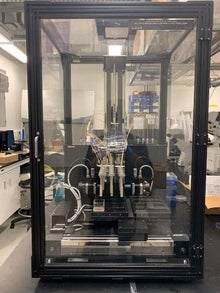Background
Encapsulation is very important in a wide range of industry applications including pharma, agriculture and food processing as it protects the core material and safeguards it from an aggressive environment and/or enables timely release of the cargo material to a targeted area.
Conventionally, such protection has been achieved either by creating a thin coating layer of Polymers/Nano-particles/ surfactants/ powders around the core material or by wrapping it in a thin bendable solid polymer sheet. However, in addition to their high cost and intrinsic complexity, existing methods have limitations such as reduced cargo volumes, encapsulating layer(s) thickness control and encapsulating layer(s) functional properties which limits their applicability in pharmaceutical and food processing industry due to lack of precise (quality) control and operational flexibility.
Description of the invention
By exploiting liquid-liquid interfacial energy differences, researchers at the University of Waterloo have invented a simple and low-cost method for accurately encapsulating a liquid core material with a thin liquid film(s) with controllable thickness. The new method allows a wide range of “core-shell” combinations and enables the design of surface-active, multi-layered (liquid/ solid/ colloid) capsules which enables maximum flexibility in designing unique capsules.
Advantages
The invention provides:
- High-speed encapsulation (multilayer encapsulation in milliseconds)
- Simple, compact and low-cost – i.e. does not need expensive infrastructure
- Bio-active material coating/encapsulation
- Nano-particle coating/encapsulation
- Direct encapsulation of liquid materials
- Multilayer coatings at once
- Imparting different characteristics to the final “parcel”
- Multiple core materials can be encapsulated and delivered in the same “parcel”
- Both small- and large-scale manufacturing
Potential applications
- Pharmaceuticals (targeted drug delivery/ delayed release of multiple active components in a single “parcel”)
- Nutraceuticals
- Agriculture
- Food and confection processing
- Cosmeceuticals and personal care products


Prototyped Encapsulation Machine
Reference
10151
Patent status
Patent pending in the US, Canada and EU
Stage of development
Prototype built and tested
Ongoing research
Contact
Scott Inwood
Director of Commercialization
Waterloo Commercialization Office
519-888-4567, ext. 43728
sinwood@uwaterloo.ca
uwaterloo.ca/research